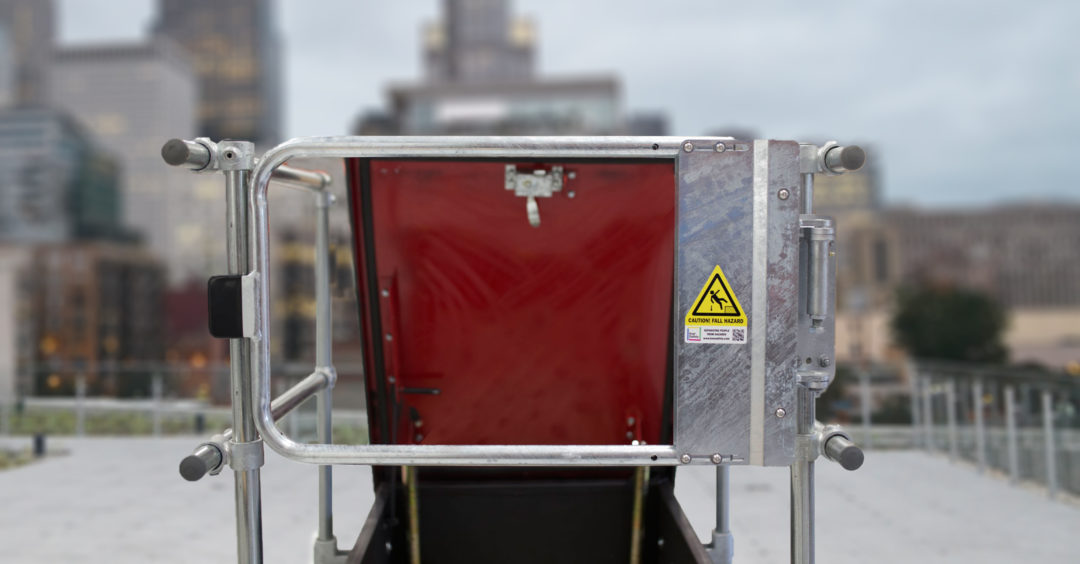Protecting ladder openings
Are chains allowed to protect a ladder opening instead of a gate?

Responding is Daniel Huntington, North American training manager, Kee Safety Inc., Buffalo, NY.
Answer: The simple answer is no.
You cannot use a chain to protect a ladder because a chain can’t close itself. I have walked through numerous facilities with chains dangling lifeless to the side of an opening as workers pass through, unaware of the hazards to which they are exposed. The most dangerous hazard regarding a chain instead of a gate is that it depends on someone else to put the chain back.
Let’s walk through the procedure of reattaching the chain while going down the ladder. The worker is required to stand on the ladder and use one hand to reattach the chain, all the while his or her back is to the hazard. Instead of placing people in this precarious position, a self-closing gate always protects the individual. It does this by eliminating the chance of user error and always protecting the opening.
Surprisingly, a great deal of confusion and misinformation surrounds the need for gates around ladders. The trouble stems from a letter of interpretation issued by OSHA in 1982. In this letter, OSHA stated that chains can be used in lieu of a gate given that the chain provides protection “at least as effective as” a swinging gate. As a result, many manufacturers of building equipment that require gates (such as overhead cranes, above ground tanks, etc.) started providing chains to save on costs. Over time, people became accustomed to seeing chains instead of gates. However, per the Federal Register, when discussing OSHA's new rule (November 2016) on walking-working surfaces and fall protection, OSHA states, “OSHA believes that double chains do not fully protect workers from falls at hole entrances, and therefore, is adopting the existing and proposed requirements that entrances to ladderway floor and platform holes have a self-closing gate or be offset to prevent workers from falling.” Therefore, according to OSHA, a gate is required at the top of all ladders. Below is the new OSHA code reflecting this requirement:
1910.28(b)(3)(iv) – Each employee is protected from falling into a ladderway floor hole or ladderway platform hole by a guardrail system and toeboards erected on all exposed sides, except at the entrance to the hole, where a self-closing gate or an offset must be used.
Visualize the ladders at your facility. Do they have chains instead of gates? If so, they need to be changed. On the equipment that you purchase, is the manufacturer still providing chains? If so, request an OSHA-compliant product. If you require additional assistance or want to take the next step, please call a professional and have an assessment performed.
Post a comment to this article
Safety+Health welcomes comments that promote respectful dialogue. Please stay on topic. Comments that contain personal attacks, profanity or abusive language – or those aggressively promoting products or services – will be removed. We reserve the right to determine which comments violate our comment policy. (Anonymous comments are welcome; merely skip the “name” field in the comment box. An email address is required but will not be included with your comment.)

